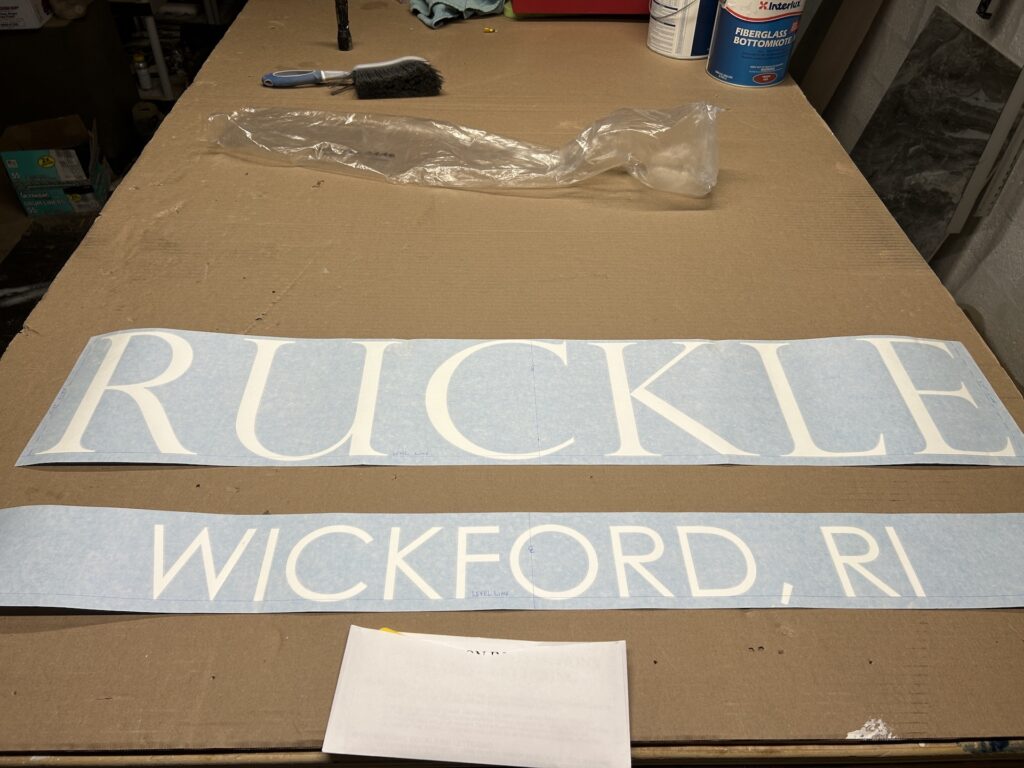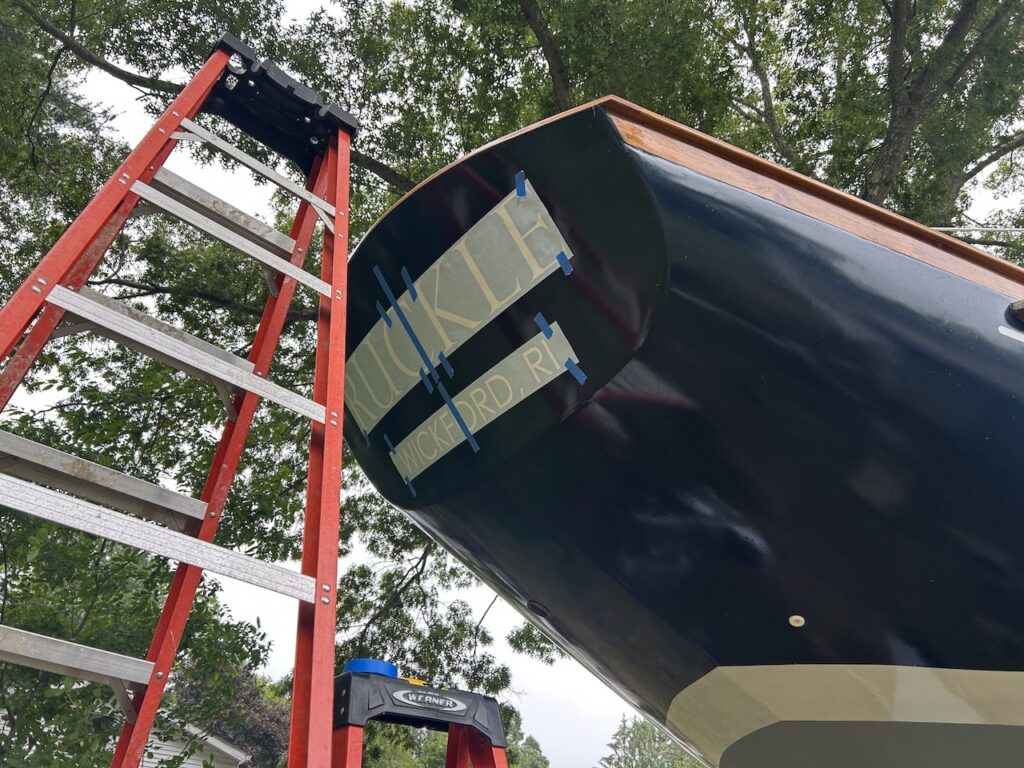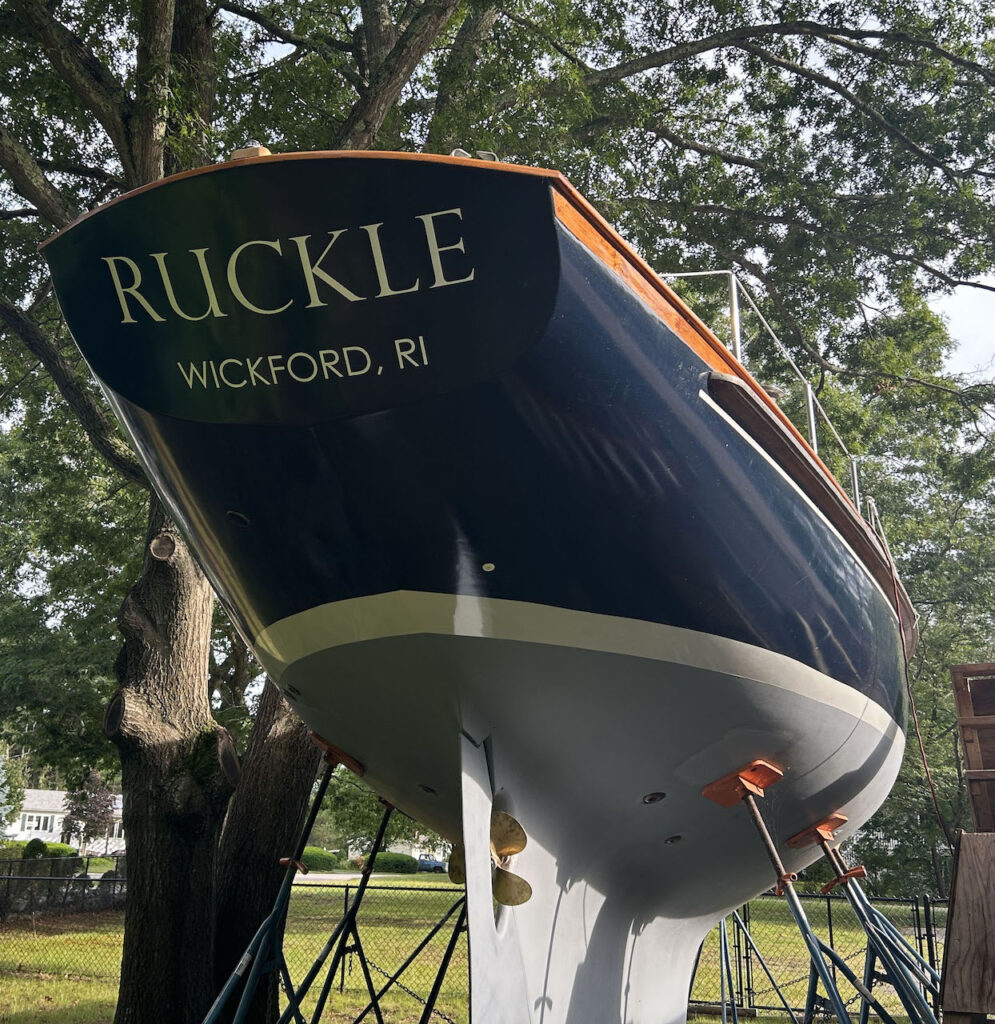7/2/23: Varnishing, Bottom Paint
VARNISHING
I varnished the exterior brightwork back in 2019, applying about 7-8 coats on everything. In the meantime I’ve applied no additional coats. The boat has been almost continuously covered and mostly protected from the Sun’s UV rays, which is the primary enemy of exterior varnished surfaces.
Recently I’ve begun to notice places where the once-OK finish is now thin to non existent. You can see an example on the cap rail in the photo below.

I once posted this quote from Rebecca Whitman’s classic book BRIGHTWORK:
“…the essence of this “folk art” is found in the direct effect each phase of refinishing has on the next laborious pursuit. The element of time has an unswerving way of exposing every change of heart, every lapse of energy, every omission of thought in the commission of our refinishing tasks. Like skins of an onion, the layers of our refinishing efforts can be peeled back to betray our degree of commitment, or lack thereof.”
Thus, the “commission of my refinishing tasks” begins now and continues until end of days. Currently my tasks are to save the areas where the finish is thin, and then in weeks to come settle into regular maintenance coats, which initially will be about 3-4 this Summer and Fall, then 2-3 next Spring, then probably 2 each Spring before launch. Taping, sanding, varnishing:
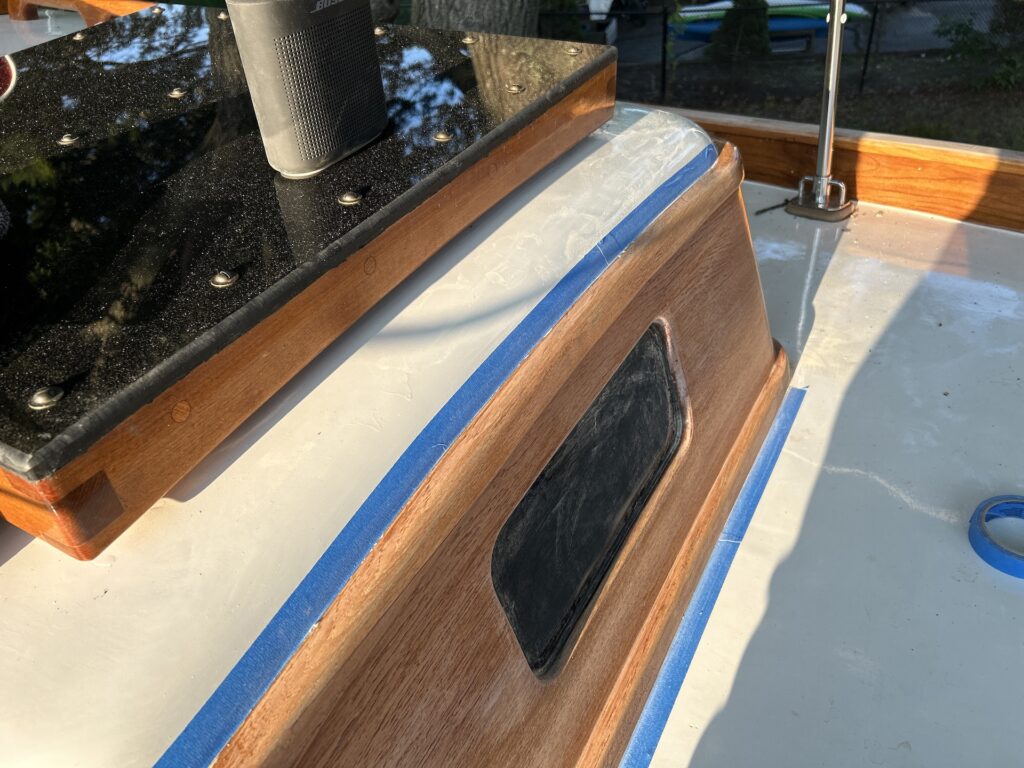
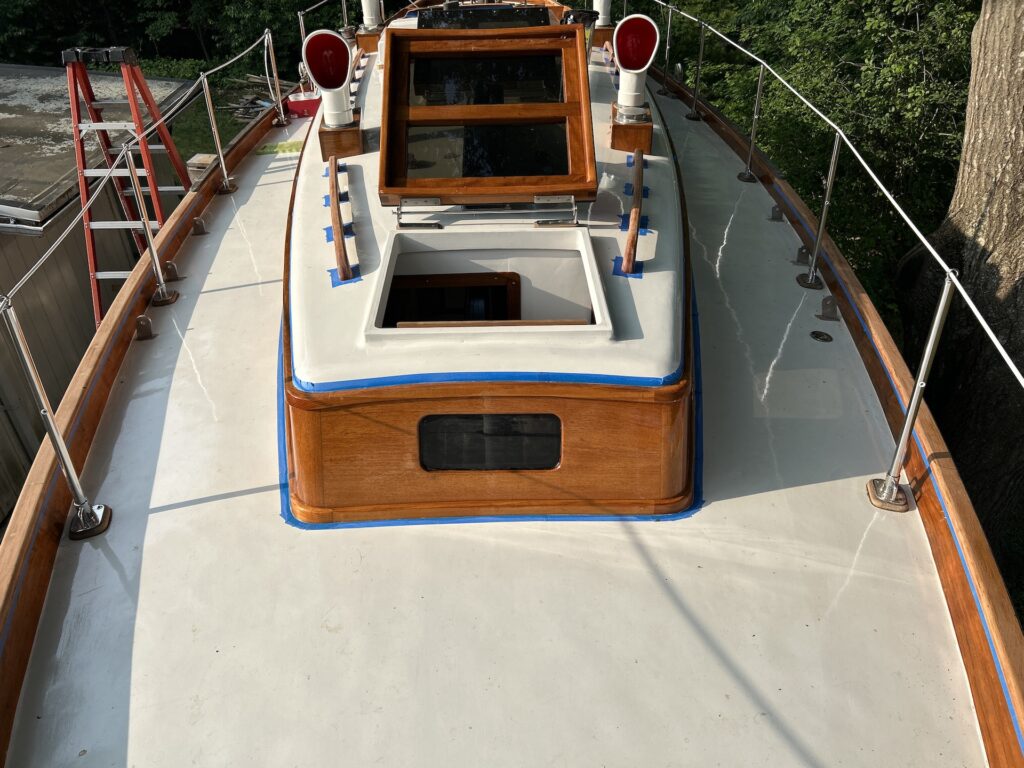
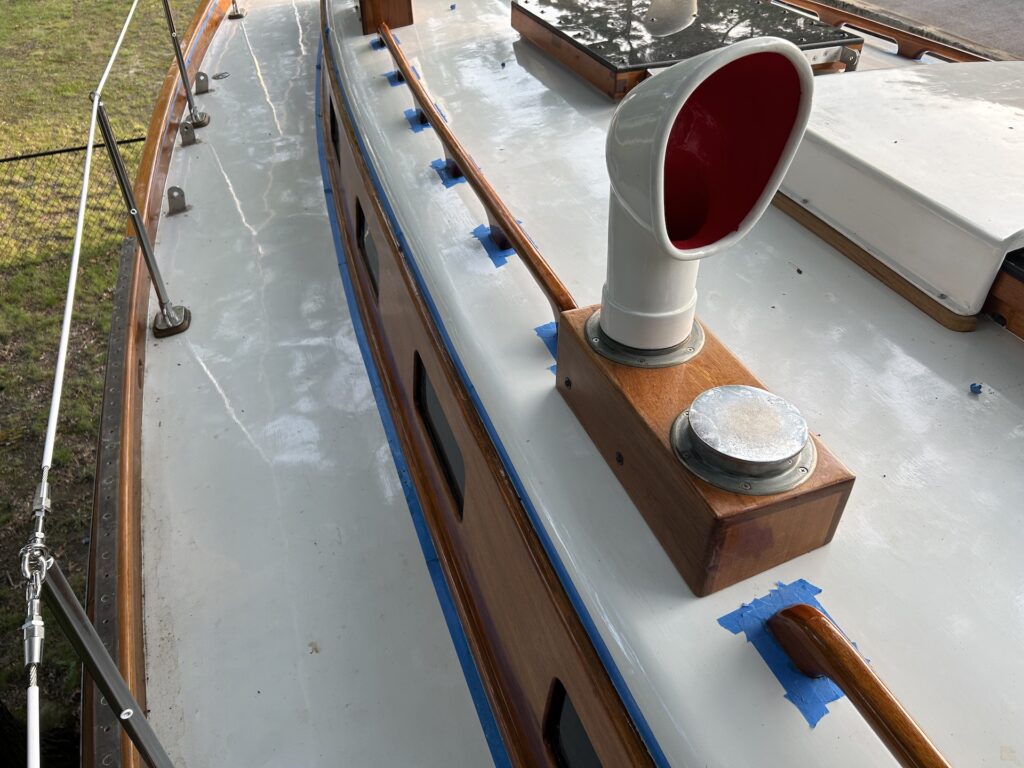
BOTTOM PAINT
The bottom received a coat of straight epoxy followed by three coats of an Interlux barrier coat system, Interprotect 2000e. I taped off the bootstripe:
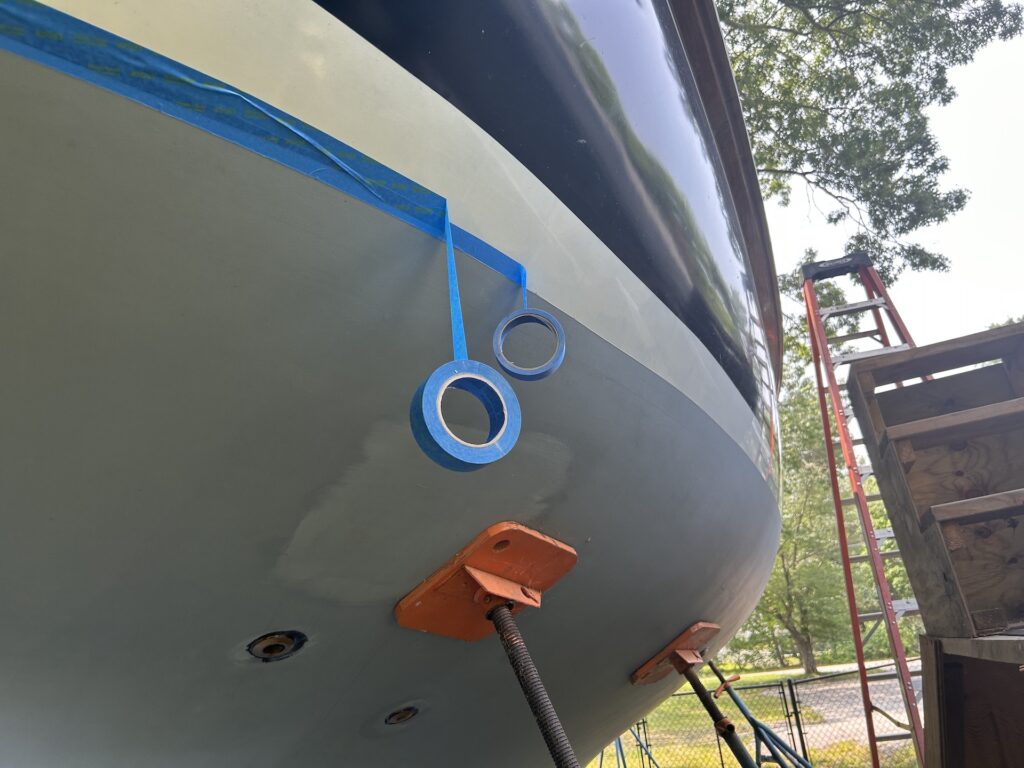
I sanded the bottom and applied another coat of Interprotect:
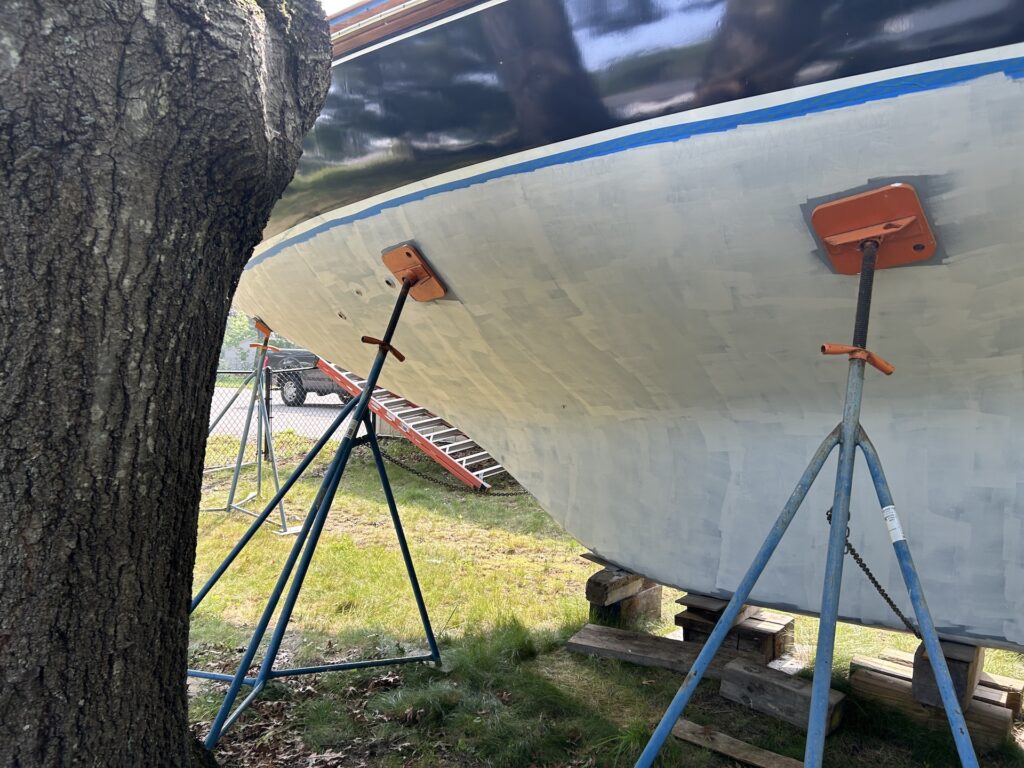
Bottom-paint products typically provide a chart of temperature-dependent min- and max- “recoat” time windows, and if you fall within the window you can recoat without sanding. I chose red antifouling paint:
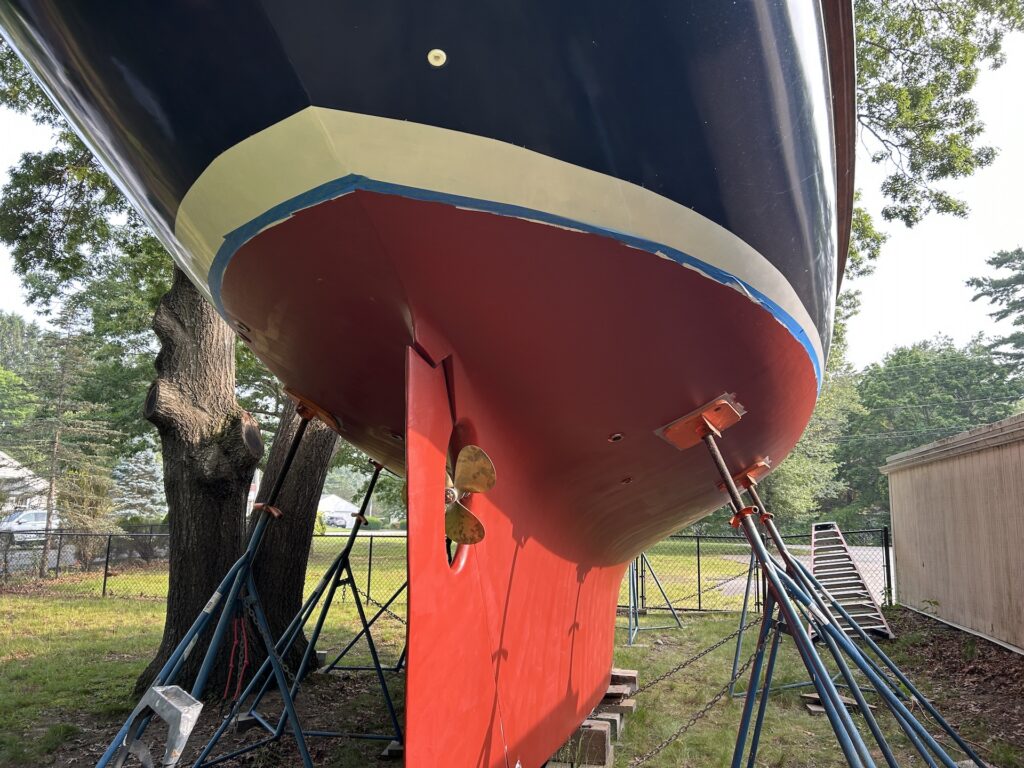
After two coats I pulled the tape:
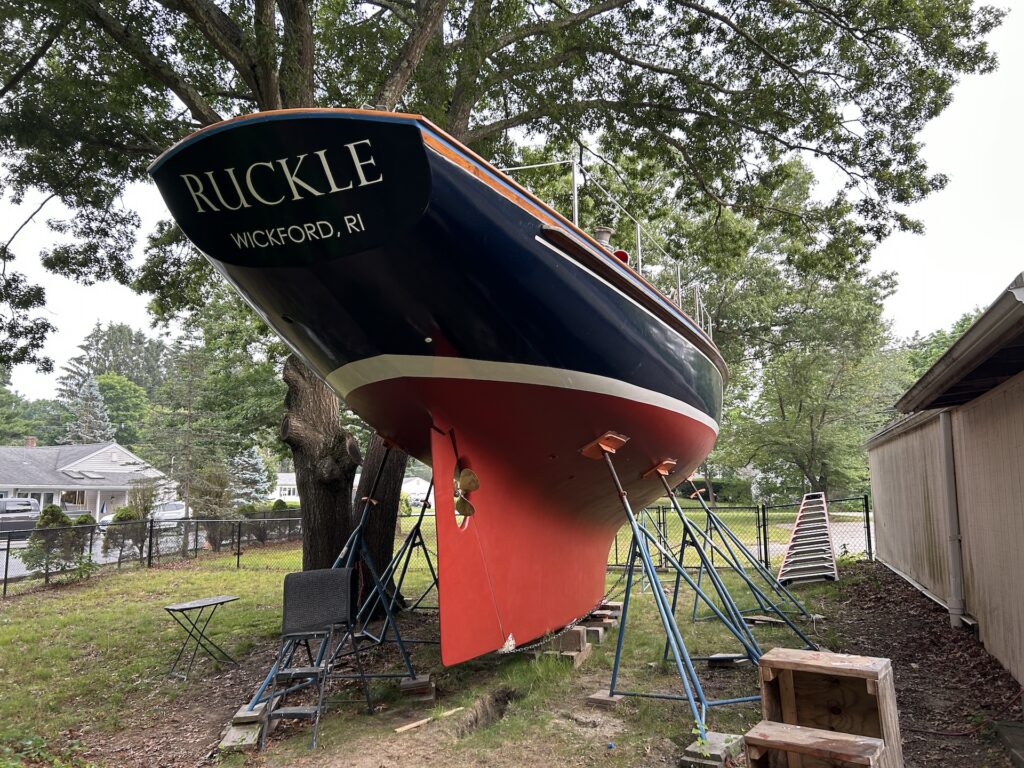
The next day I moved the stands and finished the job:
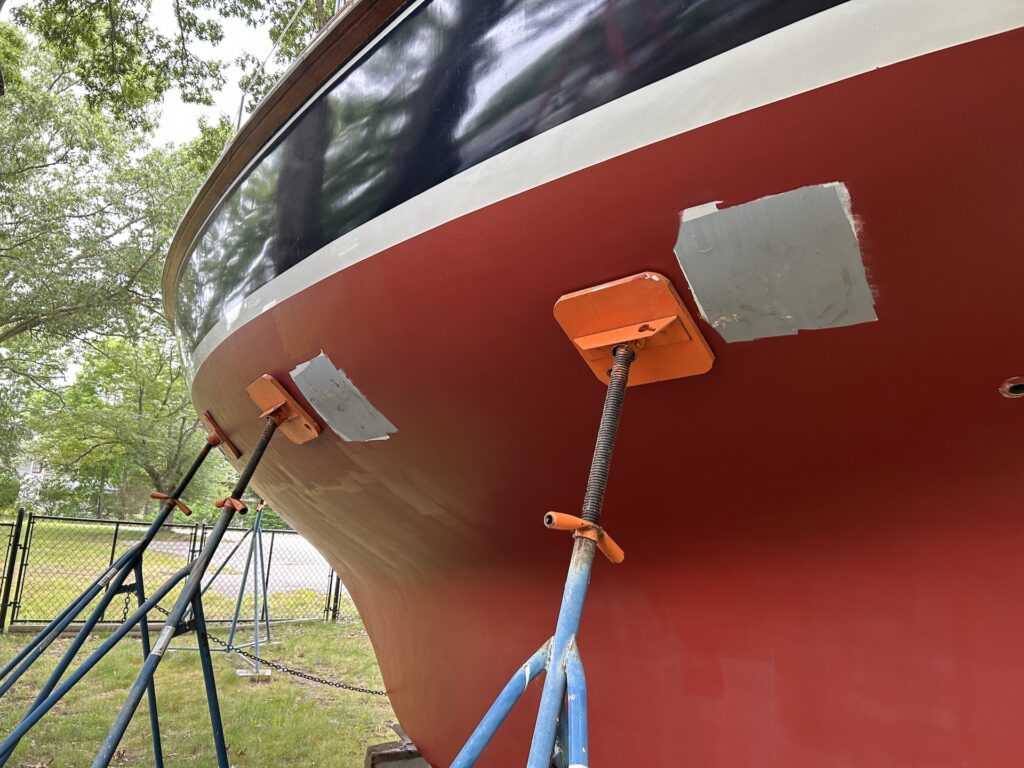
NAME
I had a local company, Island Reflections in Narragansett (401-782-2744, ask for Tim), make the name and hailing-port decals, and applied them to the transom:
